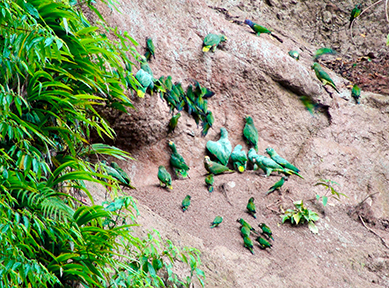Parrots will often examine new objects by placing them in their mouths. Normally, there no cause for concern unless your Parrot encounters lead in one of its many forms.
Possible Sources of Lead
~ bullets, lead putty, lead solder, lead based paints
~ glitter from trendy clothes, Christmas ornaments
~ foil from the top of wine and champagne bottles
~ pewter based products, stained glass window, light bulb bases
~ coins, costume jewellery, mirror backs, crystal
~ batteries, linoleum, plumbing material
~ glaze ceramics, improperly glazed bowls
~ twist ties, tooth brushes, plastic / vinyl coverings
~ normal tanned leather found in shoes, gloves or purses
~ certain cardboard boxes with dyes
~ imported candy / food packaging wrapping/labels
~ venetian blinds, some antiques
~ curtain weights, shower curtain weight, fishing sinkers and tire weights
Symptoms
~ depression, lethargy, fluffed feathers and a chronic head tilt
~ seizures, blindness
~ pass watery droppings with fresh red blood in it or greenish-black diarrhea
~ weakness; falling of perch (Ataxia);
~ unable to walk, stand, or fly straight
~ regurgitation / vomiting, anorexia
~ hematuria (Amazon Parrots)
In the wild, Parrots often find natural clay deposits to aid in getting toxins and heavy metals out of their systems. An excellent source of clay for our Parrots is “Harrison’s Bird Food” as most of their food products contain Montmorillonite Clay or Living World Clay-Cal.
Prevention
~ Identify and eliminate sources of lead and zinc and copper
~ Use low lead or lead-free cages, stainless steel cages, toys and food containers
Resources
http://spiritdetox.com/question/whats-the-difference-between-bentonite-and-montmorilonite
http://spiritdetox.com/the-facts/benefits-of-healing-clay
https://www.highlightskids.com/science-stories/parrots-eat-dirt
http://www.vcahospitals.com/main/pet-health-information/article/animal-health/lead-poisoning-in-birds/881
http://www.beautyofbirds.com/heavymetalpoisoningbirds.html
http://www.birdclinic.net/avian1.htm
http://www.dummies.com/how-to/content/positive-and-negative-ions-cations-and-anions.html

